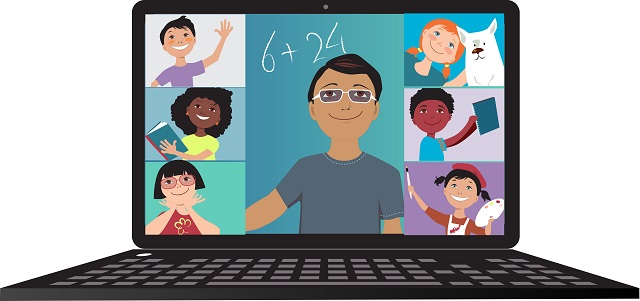
If there’s one thing the coronavirus pandemic has taught us it’s that there’s no simple solution. Often complex rules reflect our need to balance staying safe, continuing some level of social interaction and going to work.
Head teachers returning to school in the autumn term will be acutely aware of this complexity. In line with government guidelines, solutions will vary from school to school depending on their particular circumstances and will include some or all of the following: classroom or year group bubbles, face coverings, hand hygiene, PPE, scrupulous cleaning, social distancing, as well as other measures.
For older children, some element of social distancing in the classroom is recommended*.
This is one area that IT can provide solutions. Using a combination of personal devices for students and the right software, effective classroom teaching can continue safely.
Here’s five ways the right IT set up can promote safe learning for teachers and their students. The further benefit from the following points is that each can cross over from the classroom to the home environment. So, in the event of another lockdown, teachers and students will be ready to continue the learning journey uninterrupted…
5 things teachers can do while leading lessons on devices:
1 Broadcast lessons
Using a personal device, teachers can sit at their desks socially distanced from children and broadcast to all the class’s devices. With teachers and children each using dedicated devices, contact is avoided. Also, once teachers and students are familiar with learning this way, they are ready to continue remotely in the event of a local or national lockdown.
2 Monitor student work activity
Monitoring student work in real time traditionally requires some close contact, and this is where tech provides huge benefits. With the right set up, teachers can monitor individual devices to check on progress. Sophisticated functionality can even give a teacher a thumbnail view of every student’s device, to offer an overall picture of activity.
3 Provide chat-based feedback
Whether it’s a discrete message to a student in the classroom or in-depth conversation to support home learning, chat-based functionality means students are never left high and dry with device-based learning and teachers can always engage interactively.
4 Take control of devices
Nothing shows off the capability of sophisticated device-led learning than remote control functionality. A teacher can take complete control of a student’s device to guide them closely through a procedure or solution in a way that, until very recently, was only possible through the close social contact schools are trying to minimise right now.
5 Safeguard students
One question frequently asked about device-led learning is: how safe is this? The answer is very — providing the right safeguard functionalities are integrated. Students can have access to only approved websites, and trigger words will alert administrators of attempts to access forbidden content. Also – a feature that expands functionality considerably – all of this applies to the home or school environment because all activity, wherever the device’s location, is routed through school servers.
The right software will help you safeguard children online whether they are working in the classroom or at home.
How to get set up for social distancing in the classroom
None of this is complicated to set up. It requires a device-per-pupil approach, of course, and the introduction of specialist schools software, which can be integrated to work across a whole school or even a network of schools.
If you would like to find out more about IT for social distancing in the classroom, you can speak to our friendly advisors at Intersys. We not only have long-term relations with a wide range of education clients, we offer full set-up and support and can even source software and hardware at preferential rates. Visit our social distancing in the classroom page to find out more about the services we offer, them email or call +44 (0) 20 3005 4440.
* Guidance for full opening: schools, Updated 17 September 2020: ‘It is likely that for younger children the emphasis will be on separating groups and for older children, it will be on distancing. For children old enough, they should also be supported to maintain distance and not touch staff where possible.’
Please note: the government’s schools guidance for the pandemic is regularly updated and new guidance may supersede anything referenced in this article. Please refer to the government’s advice for the latest recommendations.